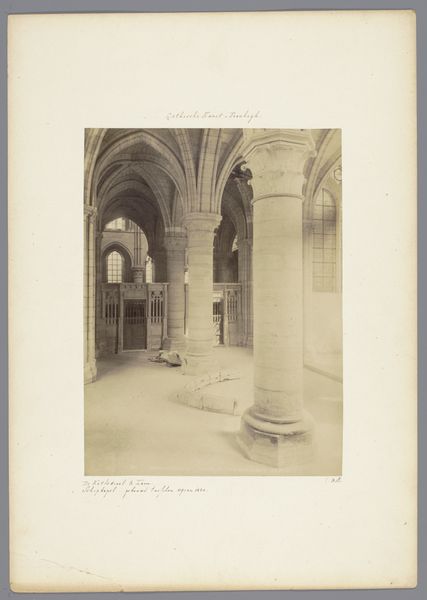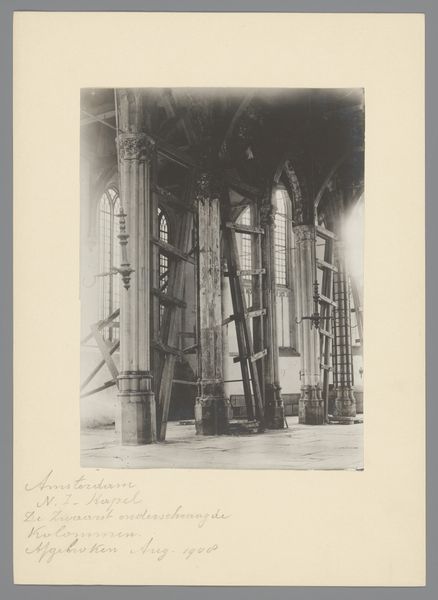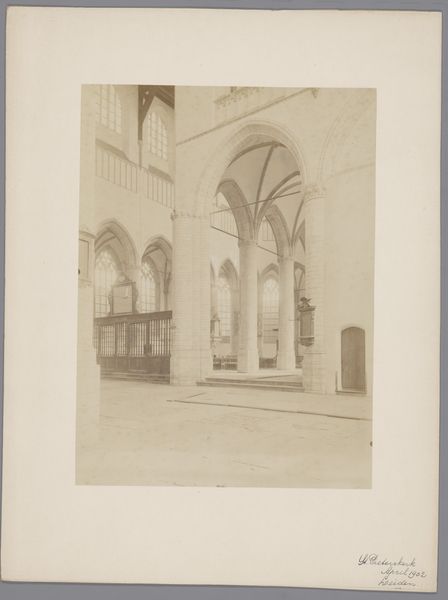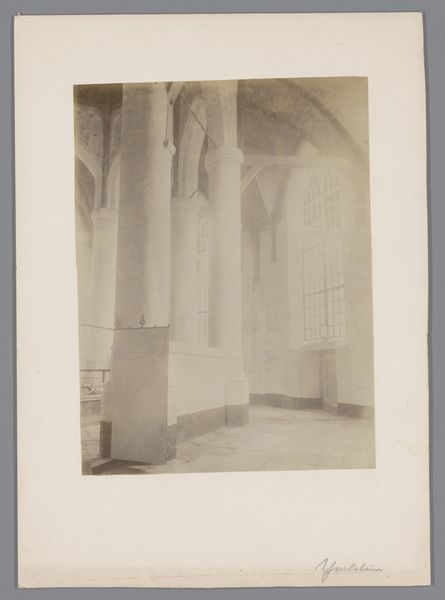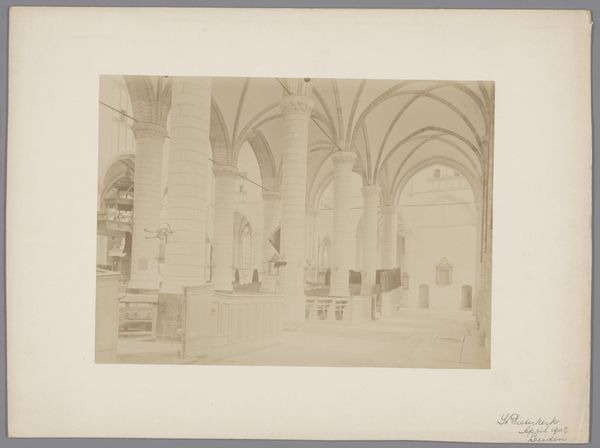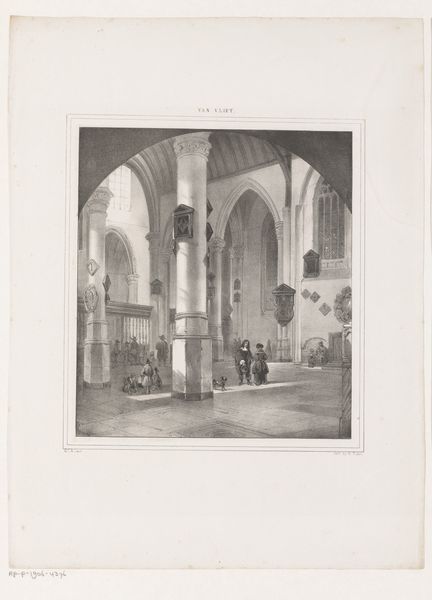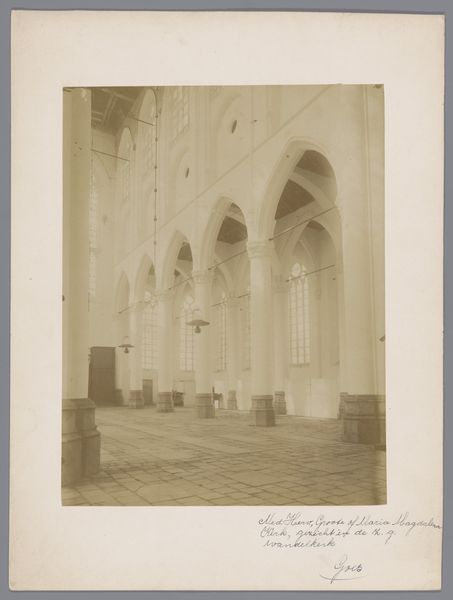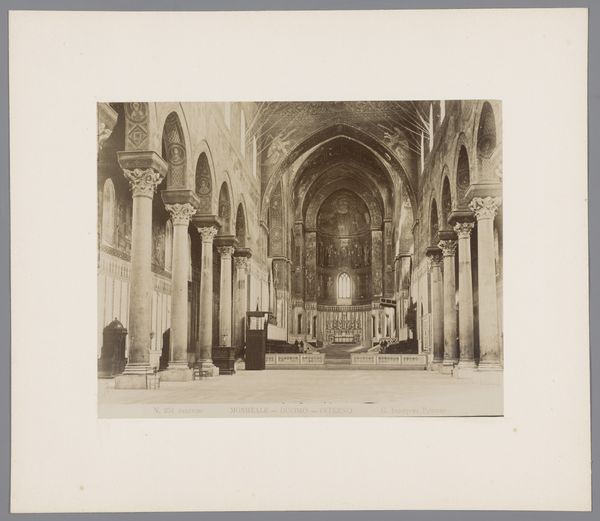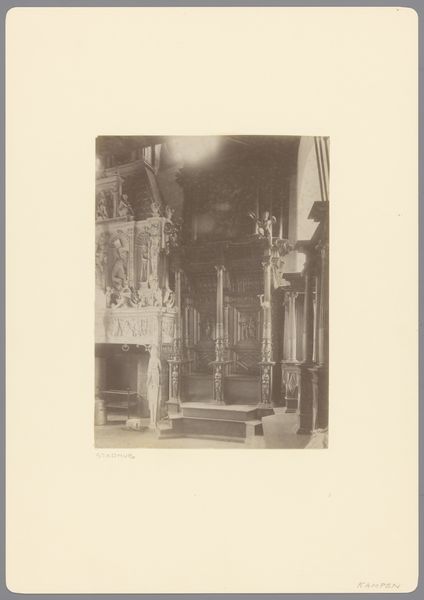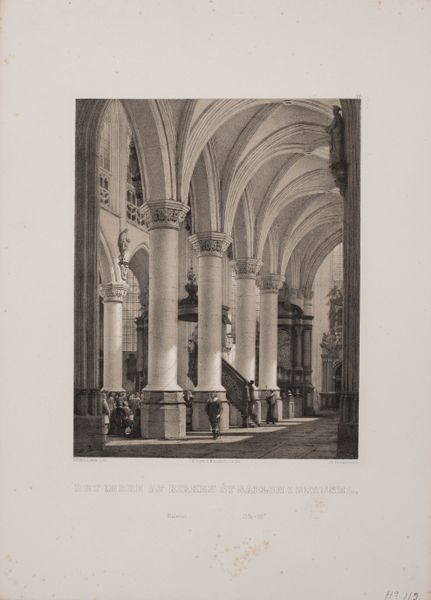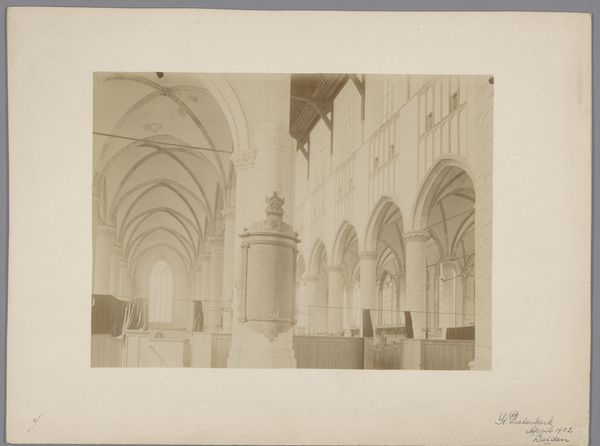
photography
#
landscape
#
photography
#
geometric
Dimensions: height 212 mm, width 158 mm, height 325 mm, width 235 mm
Copyright: Rijks Museum: Open Domain
Curator: Albert Adriaansz's 1908 photograph, "Interior of the Nieuwezijds Chapel in Amsterdam," presents a haunting view. The geometric starkness of the architecture, especially the imposing columns, is really striking. Editor: It’s immediately evocative, isn’t it? There's an emptiness, an almost ghostly quality conveyed through the photographic medium, with its soft focus. It suggests a building stripped bare, ready for redevelopment maybe? I am keen to explore more the way the light plays on the different materials used, and to imagine who made these impressive architectural forms. Curator: Well, the Neuezijds Chapel had a complex history, originally a Catholic place of worship and then becoming protestant during the reformation, mirroring Amsterdam's own religious upheavals, before finally ceasing operations in the 1950s. The photograph might reflect some of that shifting identity, showing a space in transition. Editor: It does make you consider the physical labor required to create these vast structures, not to mention the cost. Churches always represent the intersection of social forces and material excess. Looking closer at the construction, how would the wood rafters have been hewn, raised into place? How long did each stone column take to carve and polish? Curator: Considering gender too: What roles were open to women here, beyond simply being a place for reflection? Who held authority, dictated designs, financed building? Editor: Absolutely, we could see it through lens of materiality: stone, timber, plaster all mined and processed with varying degrees of craftsmanship, connecting it to a global web of resource extraction. And what was left, for later generations when its utility ended? Waste and reclamation, as an act of either respecting its value or completely demeaning its original intention. Curator: This tension is palpable. And it provokes the questions: Whose story is enshrined in spaces like these, and what narrative will we inherit? Editor: Precisely! Even something as seemingly static as a photograph opens to many avenues for reflection, doesn’t it? Looking carefully reminds us that meaning inheres not just in the what but how something is made, and what interests had to be met in the process.
Comments
No comments
Be the first to comment and join the conversation on the ultimate creative platform.
